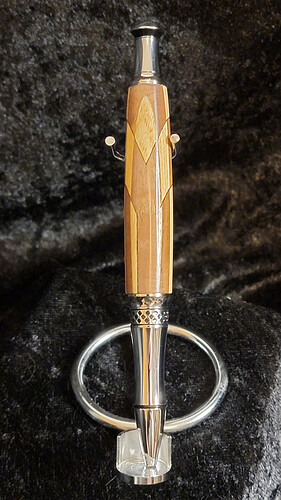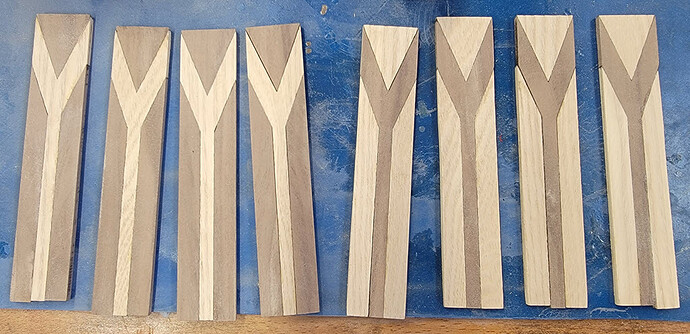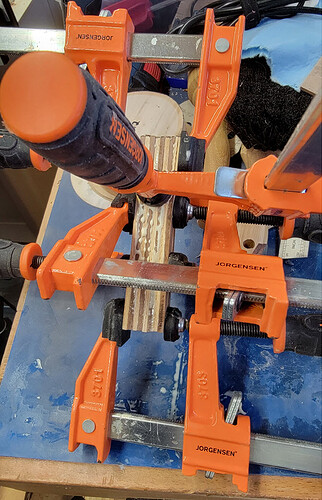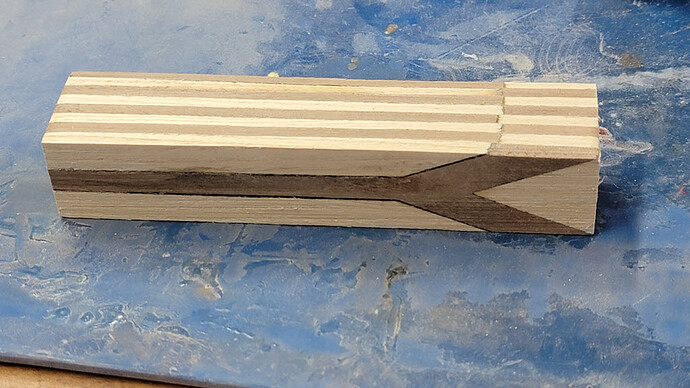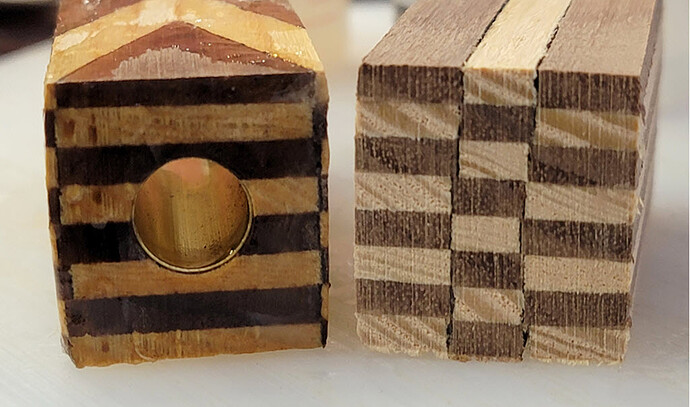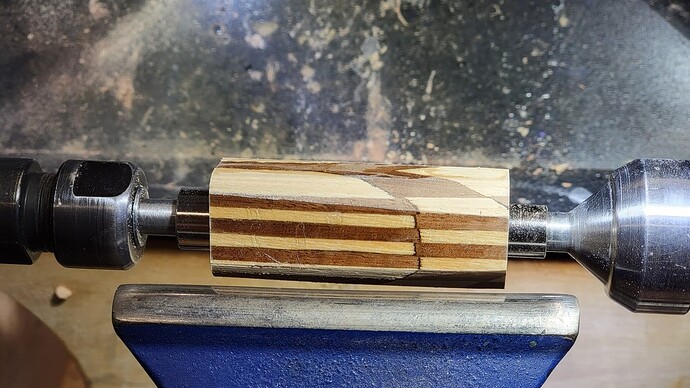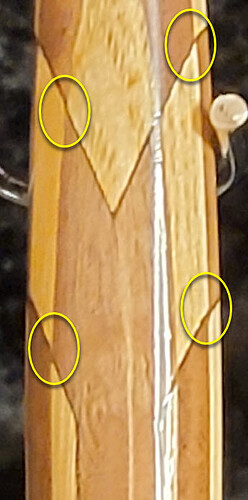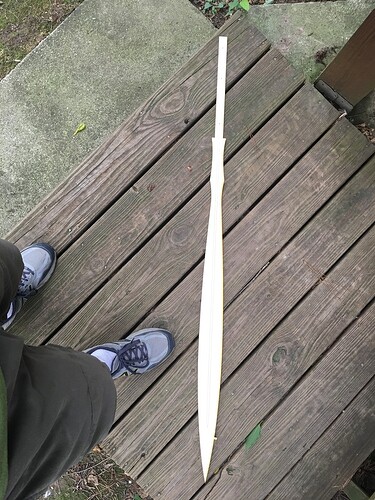After the last few posts, some of you may be wondering “Hey T.Rob, is there anything you do on the lathe that doesn’t involve the Glowforge?” Yes. But not today.
This project can be done with traditional tools or power tools, but the ![]() reduces the time from days to a few hours.
reduces the time from days to a few hours.
“Wait, the Glowforge did that?” Yes. Well, the first steps, anyway. The project began with some thin stock (1/8") walnut and maple. I drew a simple cut outline that I hoped would prove interesting, then cut out 4 copies each from the maple and walnut. The light and dark pieces were then swapped out to make the layers.
Here the pieces are in dry-fit:
Each of the layers was assembled with Super Glue, then sanded to get the excess glue off the faces and flush up the maple and walnut which were ever so slightly different thicknesses. (That 1/8" is nominal.)
The next phase of glue-up puts to test the old adage that you can never have too many clamps. In hindsight I was at least one short because that triangle piece at the top of should have been more firmly seated. Lesson learned. I actually have another 3 dozen clamps so I will do that next time for sure. This stage was done with Tite-Bond 3 wood glue instead of super glue
I had to suppress my OCD tendencies and ignore the slight misalignment of the seams in the resulting blank. The edges were sanded to expose bare wood because the kerf line has too much residual oil to make a strong glue joint. In some cases the sanding left large gaps. The outer layers will be entirely cut away so I put the layers with large kerf gaps on the outside.
The resulting blank is ugly but square (enough) at 1" x 1.13" to find center and drill.
Here are the top and bottom of the blank after cutting it to size and gluing in the brass pen tube from the kit. Some thin super glue is added on all sides to fill in any gaps and hopefully strengthen any weak glue joints.
The last step is to turn the pen on the lathe. On either end are bushings the exact size of the tip and cap pieces from the kit. Once the ends are flush with the bushings you can make the barrel any shape you want. This can include beads to help grip, ripples, concave bulges, or anything the turner finds interesting. In this case I knew the pattern would be busy so I went for a smooth taper and let the wood do all the talking.
So, there you have it. Some maple, some walnut, some light amplification by stimulated emission of radiation, and voila! The harlequin pen.
